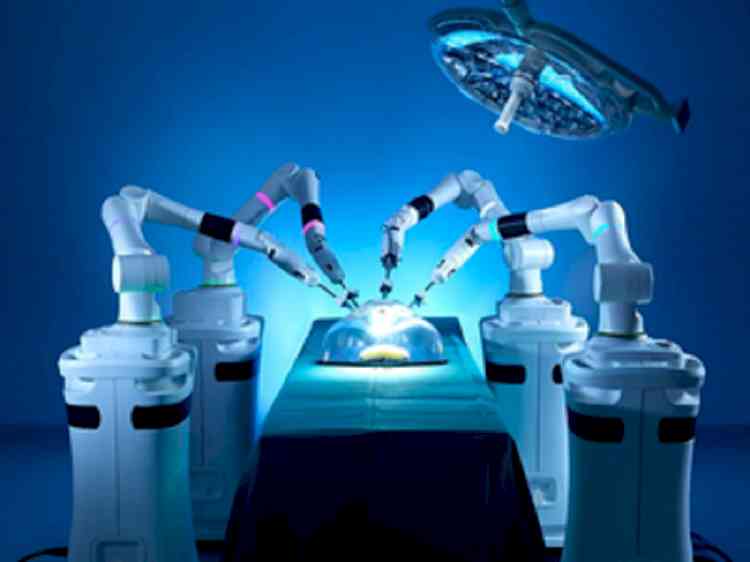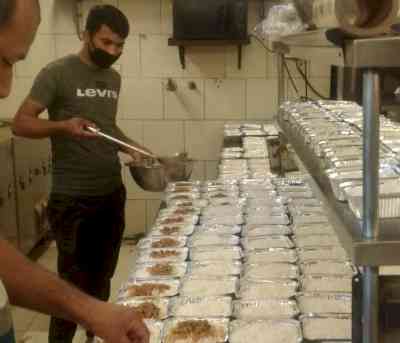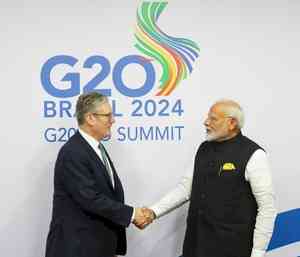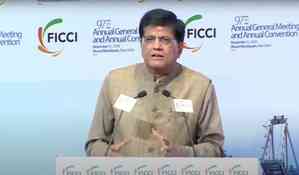Global robotic surgical systems market to reach $3.3 bn in 2023: Report
The global outlook remains robust for the robotic surgical systems market, which is set to grow at a compound annual growth rate of 15.7 per cent from $3.3 billion in 2023 to $7.2 billion in 2033, according to a report on Thursday.

New Delhi, Oct 26 (IANS) The global outlook remains robust for the robotic surgical systems market, which is set to grow at a compound annual growth rate of 15.7 per cent from $3.3 billion in 2023 to $7.2 billion in 2033, according to a report on Thursday.
This is despite leading player Intuitive Surgical experiencing an 8 per cent decline in Q3 share price during pre-market trading, said the report by GlobalData, a data and analytics company.
Notably, Intuitive Surgical boasts an estimated global share of 57 per cent in the robotic surgical systems market.
Intuitive’s $1.74 billion revenue reportedly fell just short of analysts’ predictions of $1.77 billion. However, it is still promising with a 12 per cent increase from Q3 2022 which was led by Intuitive’s flagship product Davinci and showed a 19 per cent increase in procedures.
Other factors that may be contributing to the share drop is increased competition. For example, companies such as CMR Surgical, which just received $165 million in funding for its product Versius.
In addition, Australia-based Interventional Systems just received US Food and Drug Administration approval for use of the Micromate in the US.
“A market-dominating company’s decline can often have ripple effects across its industry. However, in this specific scenario, given the ongoing revenue growth and the underlying causes of Intuitive’s share price decline, GlobalData remains optimistic about the upward trajectory of the robotic surgery market,” said Aidan Robertson, Medical Analyst at GlobalData, in a statement.
The increasing demand for robotic surgery is brought on by the growing elderly population as well as a drive towards value-based healthcare, which focuses on improving surgical outcomes for patients.
This is providing a push for less invasive procedure development and for improving the overall technology for robotic surgical systems.
Some barriers to progress of the market are the high cost of the systems and their maintenance as well as the limited surgeon training with this technology particularly in developing markets.
“While Intuitive Surgical’s recent decline appears negative, robotic surgery continues to be an increasingly popular alternative to traditional surgery not only to patients but to companies that are preparing to develop new products. With the major growth and innovation occurring in this market, robotic surgery is sure to have a larger impact on the healthcare sector,” Robertson said.


 IANS
IANS 













